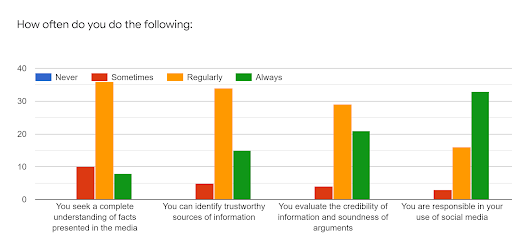by California State PTA Leadership Services Commission
PTA Communications keep your members, school and community informed and engaged. The California State PTA Leadership Services Commission has worked with the state Communications Commission to share tips and best practices to ensure that your PTA doesn’t fall behind on your communication efforts, even when your leaders need a break. These ideas are particularly valuable at times, like the holiday season when your team may be particularly busy or not as focused on school and PTA.
WHY DOES IT MATTER IF OUR PTA JUST GOES SILENT FOR A FEW WEEKS?
Your PTA can act as the glue that connects your entire school community. Regular communications keep schools and families connected to your PTA. If you consistently post important, helpful information – people will know they can rely on your PTA, and social media algorithms will reward your PTA account with better organic reach.
Steady communications remind people of your PTAs important role and make sure everyone knows about upcoming meetings and events. And it never hurts to repeat those reminders more than once. Particularly during the holidays, folks are busy, they don’t always see a message the first time.
Tip: Include meeting/event schedules in the first two weeks of January as everyone returns from winter break and may require extra promotion. Many people do year-long planning in January too.
HOW CAN WE PLAN AHEAD FOR SOCIAL MEDIA?
You can take advantage of tools that let you schedule posts in advance and only require monitoring. For example, Facebook, Instagram, Twitter, and Canva all have native, free scheduling tools to make your job easier.
Tip: When you schedule ahead, be sure to plan to review comments and posts regularly.
WHAT SHOULD WE POST AND WHEN?
Some planning ahead and your association-approved calendar, school calendar and community events are the basic ingredients for creating a solid communications calendar that will clarify decisions about what to post and when. Once you have a plan, the PTA leaders in charge of communication can identify dates for releasing messages to members and the larger school community.
Tip: For announcing association and executive board meeting dates, look to your bylaws. The critical required meeting notice is at least 10 days in advance of the meeting. Mark the meeting dates and the 10-day notice dates on your calendar. Sending out messages on additional dates will boost attendance and your association’s visibility. Messaging can and should occur:
- in advance of the 10-day requirement,
- 10 days before your meeting date,
- at least once or twice during the next ten days, and
- on the day of the meeting.
Keep your PTA visible and valuable by communicating about more than meetings – include special events and fundraising in your posts. Fun observances like New Years, Cinco de Mayo, St Patrick’s Day, Valentine’s Day, and Flag Day will gain your PTA attention and goodwill. The same is true for local events of interest to families. Some PTAs chose one predictable day of the week for this kind of update messaging.
Tip: Keep in mind PTAs’ non-commercial and non-partisan policies. Be thoughtful in word choice with your online thanks to sponsors and local elected officials.
Take advantage of National and California State PTA content. You’ll find plenty of informative items ready for you to share and retweet directly by looking at the websites and social media channels of the California State PTA and the National PTA.
HOW DO WE KEEP PTA COMMUNICATIONS INCLUSIVE DURING THE HOLIDAYS?
- Remember, PTA is nonsectarian – which means not affiliated with a particular religious group. Be mindful and respectful of varied family traditions during winter break and throughout the school year.
- Use various student, family, and event photos, including many new faces, from your fall and winter programs (with photo permission releases).
- Words in a graphic cannot be translated by online translation services. If the image you’re using has words, you may need to create graphics in multiple languages to connect with everyone.
- Include descriptive “Alt Text” with all photos posted online (websites, social media, digital fliers) to improve accessibility and search engine optimization.
For more on these topics, attend one of the Communications Commission Monthly Member Calls or their workshops at the annual California State PTA Convention. And check out these Toolkit resources:
- http://toolkit.capta.org/running-your-pta/communications/
- Social Media Guidelines for PTA Leaders and Members in California
Note: External/non-capta.org links to social media and digital apps were current as of the December 2022 publication date for this blog post. External links can change without notice. We recommend a topic search on the web to find the most current tutorials and information.
 |
|